The Gift of South Dakota
Subscriptions to South Dakota Magazine make great gifts!
Subscribe today — 1 year (6 issues) is just $29!
Travel Like It’s 1938
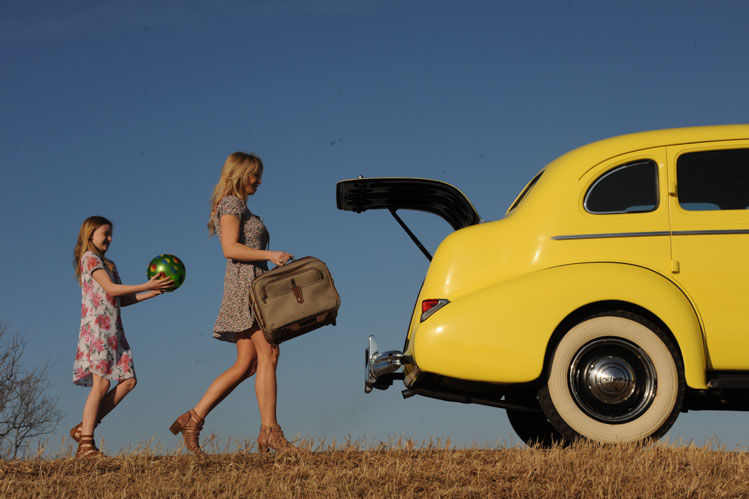 |
Franklin Roosevelt was president and Leslie Jensen was governor of South Dakota in 1938. Ted Turner, now the biggest private landowner in the state, was born that year in Cincinnati. In the summer of ’38, Clarence “Pappy” Hoel invited a few friends with motorcycles to a party that became an annual event now known as the Sturgis Motorcycle Rally.
Gutzon Borglum and his mountain crews finished carving images of Jefferson, Washington and Lincoln in 1938, so the sculptor decided to begin a 70-foot tunnel to preserve the great artifacts of American history. He thought the U.S. Constitution and the Declaration of Independence belonged there, among other items.
Henry Ford’s 1938 Coupe was selling for $625; he had already manufactured 25 million cars. Thanks to Ford and other automakers, Americans were traveling to see the 48 states as the nation rose from the Great Depression.
Because of the hard times, President Roosevelt’s Works Progress Administration put people to work building dams, schools and other public projects, including stone bridges and log cabins in Custer State Park. The WPA also offered a special Federal Writers’ Project for struggling artists, poets, authors, photographers and journalists.
Part of the project involved a “See America First” program. Writers in each state were gathered to create a comprehensive travel guide. M. Lisle Reese, a young Pierre journalist, was offered $2,300 a year — a fine salary in a time when the average American earned $1,750 — to lead the South Dakota effort.
Reese’s first job was to recruit writers. There were no professional writers on the federal government’s state relief rolls, but he eventually found a ragtag team that included a well-educated sheepherder from Harding County, an Aberdeen newspaperman known as the “Walking Reporter,” a friend of Huron druggist Hubert Humphrey who liked to write letters to the editor, and a coach at Woonsocket who slipped on a bar of soap and suffered a head injury that ended his teaching career.
Other South Dakotans eventually joined the staff and a lengthy manuscript was readied for publication. Unfortunately, bureaucrats in Washington decided that the South Dakota guide was not worth the printing costs because it was, “the only state with only one bookstore … ,” recalled Reese.
He and other supporters of the guide asked the state legislature for $2,000, but a bill sponsored by Rep. George T. Mickelson, chairman of the appropriations committee, drew scorn and ridicule as being frivolous and “at the bottom of the state’s needs.” Somehow the bill passed in the closing minutes of the 1938 legislative session.
State Publishing Company in Pierre delivered 4,000 books to the State Historical Society. A few weeks later the state legislature abolished the South Dakota Guide Commission, but the pages could not be unprinted.
The book never received the national circulation of guides in 47 other states. By 1944, copies were extremely difficult to find. However, several publishing houses later reprinted the guide, including excellent efforts by both the South Dakota and Minnesota state historical societies. Various versions can be found today in new and used bookstores and online.
Much has changed in the 85 years since Reese’s motley crew assembled the original. For example, the 1938 team found a replica of poet Henry Wadsworth Longfellow’s house in Aberdeen; now there’s only a parking lot on the site. They were impressed by two old hackberries at Fourth & Rowley in Mitchell, but the trees are long gone. And a Wells Fargo bank now occupies the corner where an amazing meat market was located on Huron’s Dakota Avenue (the Lampe Market raised, butchered and retailed its own beef and pork.)
Still, it’s intriguing — and somewhat comforting, in today’s fast-paced world — to discover how much has stayed the same over the past 85 years.
Here is an abbreviated 1938-2023 travel guide: we’ve paired italicized excerpts from the original book with our own observations on what you might find at the same spot this summer as you travel South Dakota.
MEMORIAL HALL
Pierre
1938
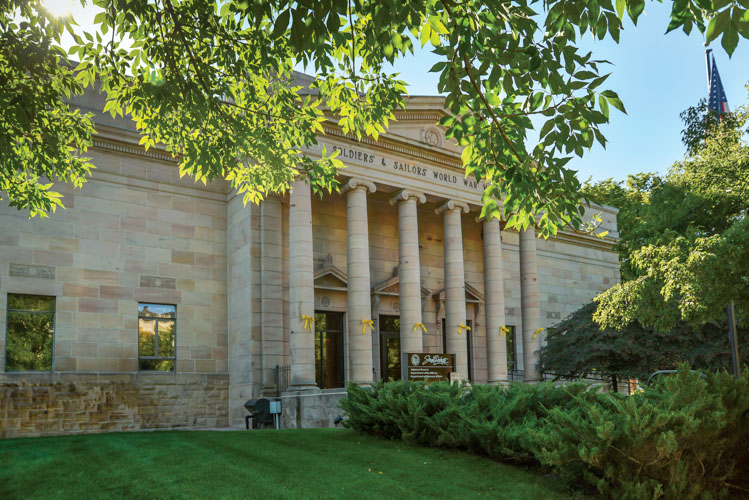 |
Memorial Hall, opposite the Statehouse on Capitol Ave., is dedicated to South Dakota soldiers and sailors who lost their lives in the World War and houses the State Historical Society, Department of History and State Museum. The cornerstone was laid in 1930. Constructed of Hot Springs, S.Dak., sandstone, the building is stately and of classic design. Steps of Milbank granite lead to the entrance. In the curve of the retaining wall is a large rock in which is visible the imprint of a human hand, believed to have been chiseled there with a sharp rock by an Indian.
2018
The state’s historical society and museum have moved to the Cultural Heritage Center in nearby Hilger’s Gulch but Memorial Hall still merits a visit. Today it appropriately houses the S.D. Department of the Military and the S.D. Department of Veterans Affairs.
CHIC SALE HOUSE
Huron
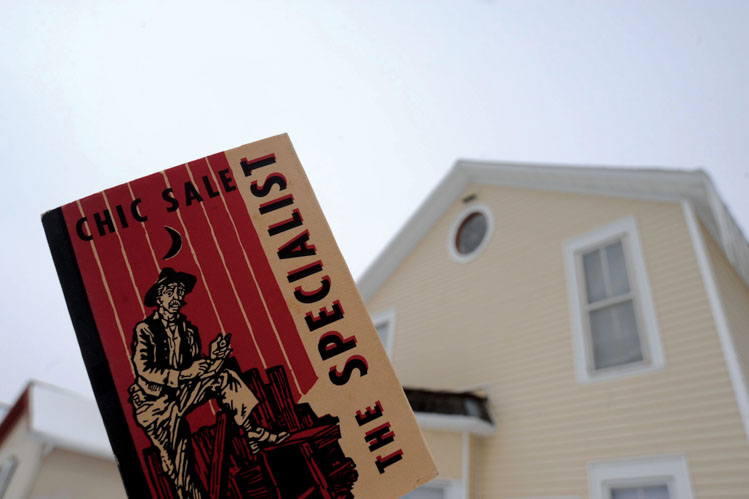 |
1938
643 Illinois Ave., S.W., was the boyhood home of “Chic” Sale, as he was known to the theatrical and literary world. He was born in Huron in 1884, the son of Dr. Frank O. and Lillie B. Sale. The publication of “The Specialist” was “Chic” Sale’s debut into the literary field and it became the “mirth of the nation,” over a million copies being sold.
2018
The Sale home still stands, just south of the Huron Arena. We also found a copy of The Specialist, an aw-shucks comedy about a man planning an outhouse. He writes that one technical point to be considered is this: “What is the life, or how long will the average mail order catalogue last, in just the plain, ordinary eight family three-holer? I checked up, and found that by placing the catalogue in there, say in January — when you get your new one — you should be in to the harness section by June; but of course, that ain’t through apple time, and not countin’ on too many city visitors, either.”
W.W. HOWES AIRPORT
Huron
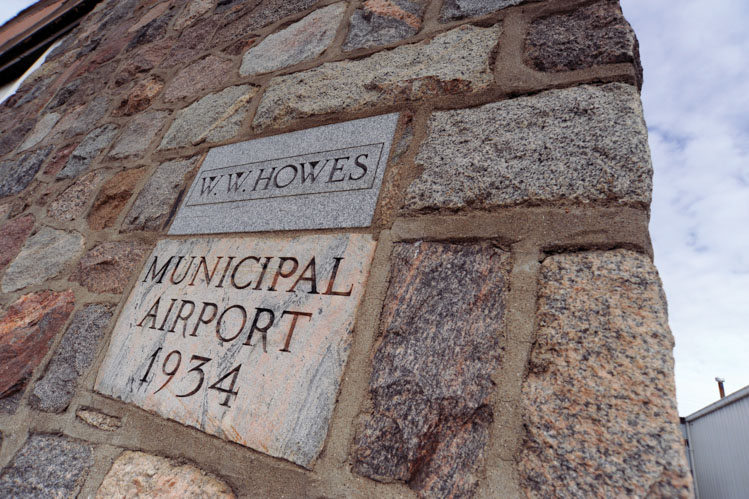 |
1938
The airport was named for W.W. Howes of Huron, assistant Postmaster General, and was built with the aid of the Works Progress Administration. All the buildings are substantially constructed of hand-cut native stone and all have cement floors.
2018
The stone hangar still serves pilots at the airport north of town.
RIVER OASIS
Oacoma
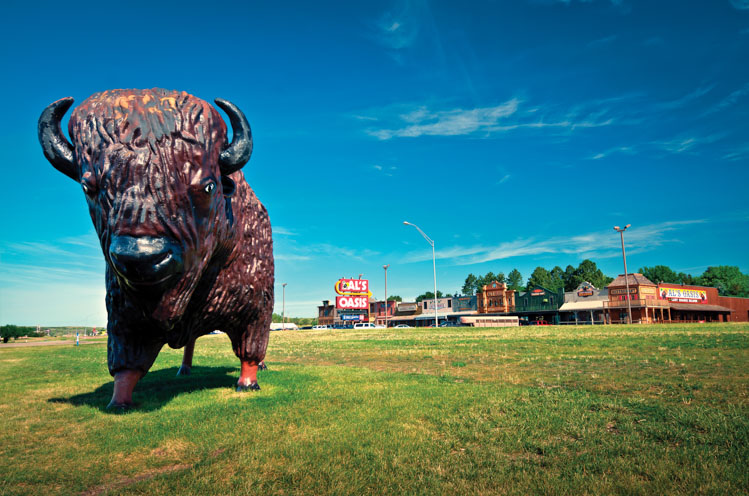 |
1938
Oacoma was so named because it lies between the Missouri River and bluffs beyond. Manganese was discovered in the hills NE. of town, but the deposits have not been utilized to any extent, though some attempts have been made in this direction. Loss of the county seat to Kennebec, together with the completion of a highway bridge, which diverted much former trade to Chamberlain, caused a rapid decline in population. Today many empty buildings give the impression of a ghost town in the making.
2018
Oacoma avoided a ghost town fate, not because of a boom in the manganese market but thanks to another federal project that was several decades in the future — the Interstate Highway System. Millions of cars pass by every year, and many stop at Al’s Oasis, a grocery store that moved in the early 1950s to take advantage of the new Highway 16 (the precursor to Interstate 90). Al and Veda Mueller offered hamburgers, apple pie and 5-cent coffee to travelers, and built a booming business. Today Al’s serves 50,000 pieces of pie per year and who knows how many cups of nickel coffee.
GRACELAND CEMETERY
Mitchell
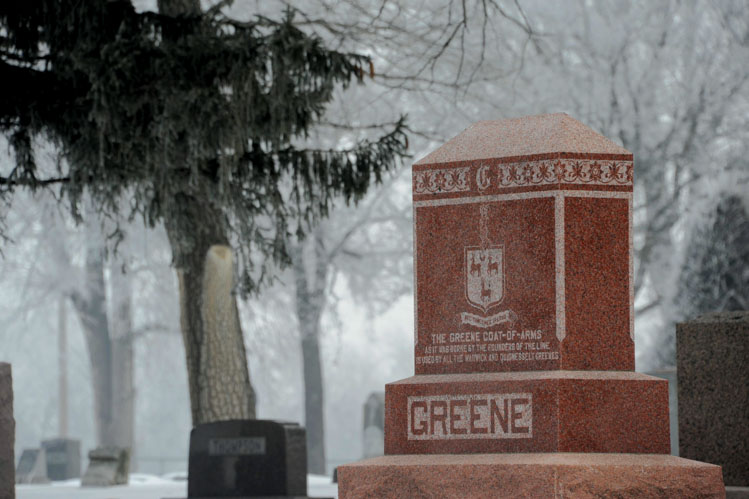 |
1938
Left of the road is the Israel Greene Monument, a large red stone marker bearing the coat of arms of the Greene family — Nathaniel Greene of Revolutionary War fame and Israel Greene who captured John Brown at Harpers’ Ferry in 1859 while a lieutenant under Gen. Robert E. Lee. When the Civil War was over, Israel Greene came to Mitchell as a surveyor, living there the rest of his life.
2018
Graceland has grown since 1938, but it’s not hard to find the Greene monument. Look for it in Old Part Block II-A.
CORN PALACE
Mitchell
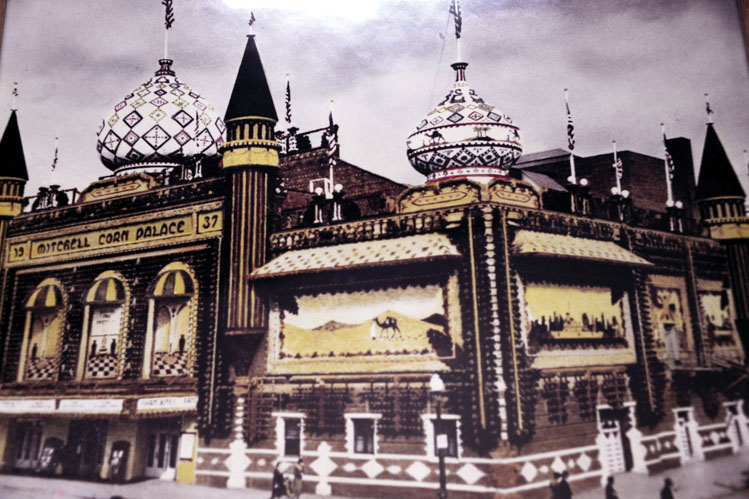 |
1938
Its exterior and interior are decorated with corn, 2 to 3 thousand bushels being used each year and some 40 tons of other grains in bundle form. Ten shades of corn are used in imparting a lifelike appearance to the scenes. When unprecedented drought ruined crops in most parts of the State in 1936, boughs of evergreen trees from the Black Hills were employed as a substitute …
2018
We found corn, flax and other grains on the outdoor panels — no evergreens. Photos of the Corn Palace dating back to 1892 are exhibited on the second floor, but 1936 is missing.
ROCKPORT COLONY
Hanson County
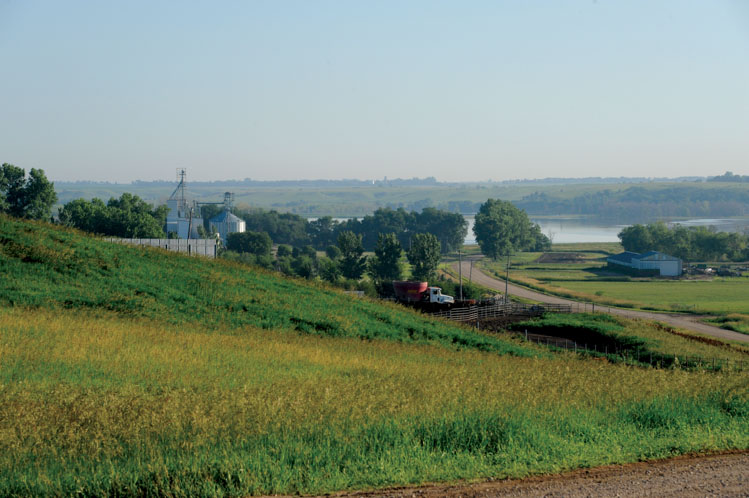 |
1938
The Rockport Hutterite Colony is the home of a stern religious sect of Swiss-German people who had lived in Russia before settling here. They retain the curious dress, customs and beliefs of their ancestors, living in secluded rural colonies where their industry and thrift enable them to become prosperous farmers.
2018
The Hutterites continue to farm their small piece of the James River Valley south of Alexandria. Rockport is perhaps most noteworthy as the final resting places of Michael and Joseph Hofer, considered martyrs among Hutterites in North America. Their story is oddly absent from the original guide. The Hofers were among four men from Rockport drafted into service during World War I. They refused to fight, adhering to their pacifist beliefs, and were court-martialed. Both died in prison. Hutterites from across the U.S. and Canada travel to Rockport and pay respects. Visitors will also find unique outcroppings of quartzite along the banks of the James River as well as the remains of Fort James — one of the only stone cavalry forts in the West — occupied from 1865 to 1866.
THE SHEEP SHED
Salem
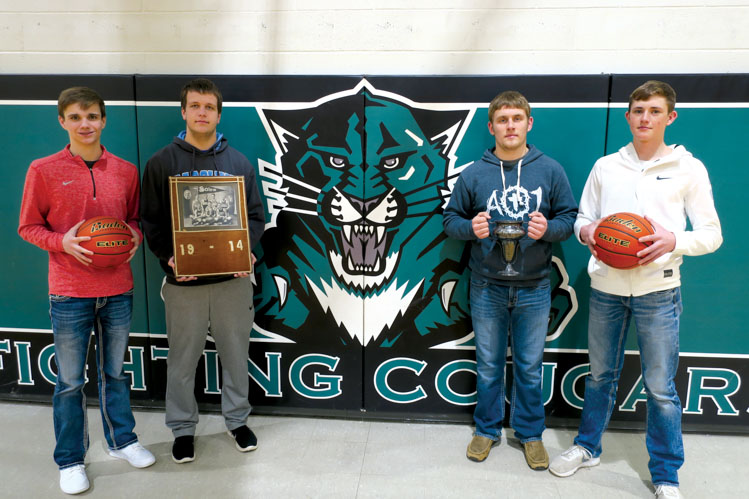 |
| McCook Central/Montrose players (from left) Kobe Doane, Kyle Tuschen, Rylee Klinkhammer and Trey Anderson with a photo of the 1914 Salem basketball team and the state championship cup they won. |
1938
The town has a large, well-equipped school, with the classrooms, as someone once remarked, “built around the gymnasium.” Playing for many years in a frame building which competitors dubbed a “sheep shed,” Salem won the State basketball championship in 1914 and came within one point of winning it the next year.
2018
Longtime Athletic Director Jack Rasmussen never heard of the “sheep shed,” but McCook Central is going strong, thanks to a new $7.1 million school. It replaced a 1924 building. Teachers were still arranging things when we visited. In a new trophy case is a team photo of the 1914 basketball team and the cup they received for winning the state tournament — thanks, no doubt, to home-court advantage at the sheep shed.
TSCHETTERS & HOFERS
Freeman
1938
It has been said that around Freeman and Bridgewater the “woods are full of Tschetters and Hofers, with several Glanzers and Kleinsassers among them.” More than 40 families of Tschetters are recorded, so many in fact, that they are distinguished from each other by numbers.
2018
Names have changed slightly, but Freeman retains a rich German-Russian heritage. A local directory contains only seven listings for Tschetters in Freeman, along with six Kleinsassers and just four Glanzers. The strongest holdovers from 1938 are the Hofers (34 listings), including Marnette Hofer, director of the Heritage Hall Museum on the Freeman Academy campus. Today’s most common name? Graber (37).
INSANE HOSPITAL
Yankton
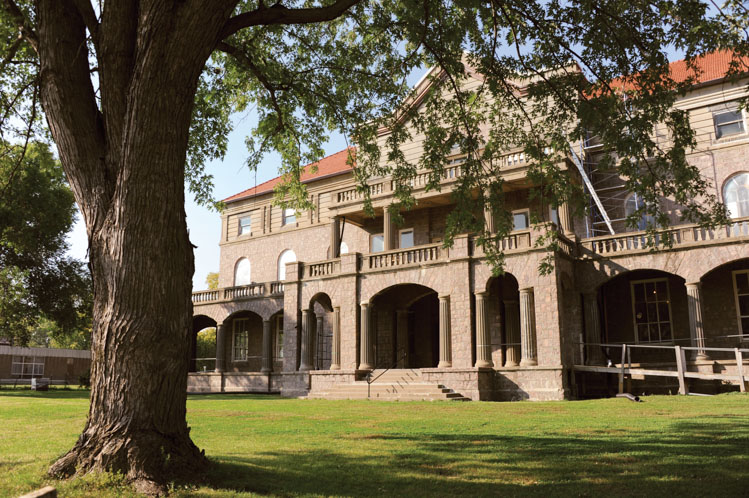 |
1938
Right from the center of Yankton on a graveled road to the State Insane Hospital, 1 m. Until 1878 the insane persons of South Dakota were cared for, by special arrangements, in Nebraska and Minnesota institutions. When Gov. William A. Howard found the institutions in those other states overcrowded, and insane persons numerous within the State, he used his own funds to secure land and provide shelter at Yankton.
2018
A modern mental health facility, the Mickelson Center for Neurosciences, was built at the same site in the 1980s but many historical buildings remain — including the grand Mead Building which will open this year as South Dakota’s newest museum and cultural center.
FIRST SCHOOL
Vermillion
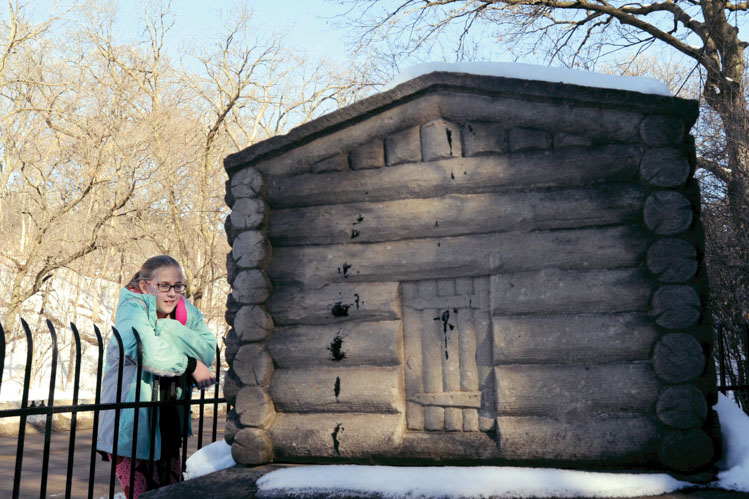 |
1938
Audubon Park, S. Dakota St., borders the Ravine Road from a bluff to the flat and is heavily wooded with natural timber. A monument to the first permanent schoolhouse, together with a miniature reproduction of the building, stands at the foot of the hill …
2018
Sure enough, the school monument, erected in 1909, remains. An inscription notes that the territory’s first schoolhouse was built there in 1864. Audubon Park, so named because the famous naturalist John James Audubon visited there while studying birds in 1843, is well kept and especially popular with birders.
14-MILE HOUSE
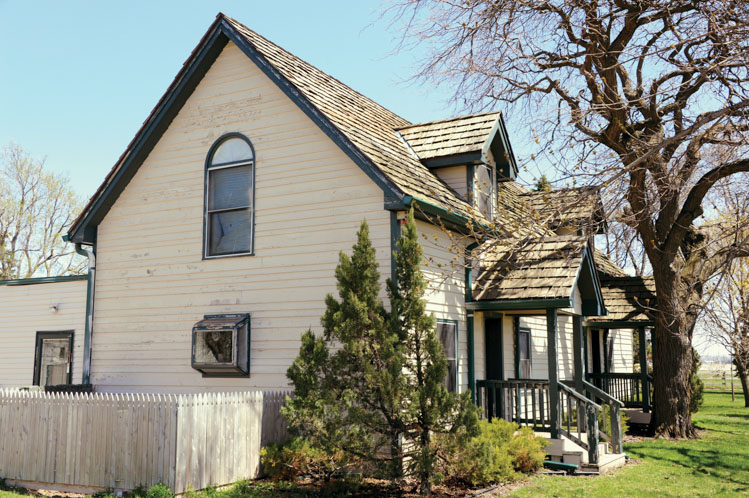 |
Jefferson
1938
The town was first started at the 14-mile house, which was a stopping place for settlers as they pushed farther into Dakota Territory. An old post office building of early days is now used as a residence at the former townsite.
2018
The 14-Mile House still stands as a private residence. Watch for the historic marker in the ditch along Highway 1-B, about 2 miles northwest of Jefferson.
O.E. RØLVAAG, ANYONE?
Canton
1938
Canton owes its name to the belief by early settlers that it is situated diametrically opposite Canton, China. Founded in 1860, the town has become the center of an extensive Scandinavian community. It was in this section that the settings of two books, O.E. Rølvaag’s Giants in the Earth and Phil LeMar Anderson’s Courthouse Square were laid. Central characters in Rølvaag’s widely-read saga of pioneer life are six brothers, named Berdahl, whose combined ages total 488 years. The oldest is 88 and the youngest 68 years old. Rølvaag, who is a son-in-law of the eldest brother, vividly describes many of their adventures.
Only after arriving in the town does the stranger discover that the tall, odd-looking cylindrical object, jutting above all other structures near it, is the city water tower, practical but unattractive.
2018
Canton’s ugly water tower is gone. Unfortunately, so are most traces of writer Rølvaag and the Berdahls. Rølvaag worked on farms near Elk Point in the 1890s before attending Augustana Academy in Canton. In 1908 he married Jennie Marie Berdahl, daughter of one of the six brothers. We stopped at a museum, located in a restored railway depot, and found no photos or record of the Berdahls or Rølvaag. No Berdahls are listed in the local phone book. At the museum, we found two local history books but no reference in either to Berdahls or Rølvaag. The library collection does have Rølvaag’s books. A helpful librarian jotted down the name and phone of a possible Berdahl descendent but we couldn’t reach her. The Berdahl/Rølvaag house, where Rølvaag wrote Giants in the Earth, now stands on the Augustana University campus in Sioux Falls.
WASHINGTON HIGH SCHOOL
Sioux Falls
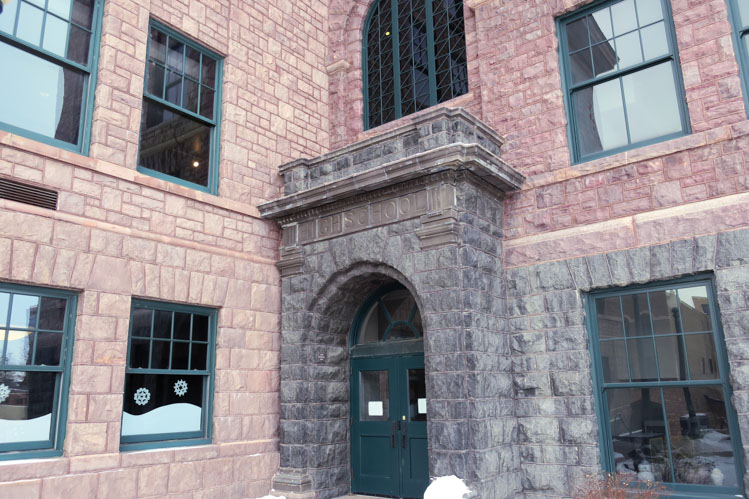 |
1938
Between Main and Dakota Aves., and 11th and 12 Sts., known as the “million dollar high school,” was constructed of native pink quartzite stone, with the north wing trim and column portico of a black quartzite so rare that it has been occasionally dismantled and exhibited at expositions. The gymnasium has a seating capacity of 6,000 persons.
2018
Twenty years ago, the old Washington High School was converted to a cultural center, featuring an art gallery, beautiful concert halls, a science center and 60-foot theater. The colossal building was built in stages, beginning in 1906 when the black stone, then believed to be quartzite, was mined from Lien Park on the northeast side of Sioux Falls. Actually, the black stone — which remains in excellent condition — is Corson diabase, a billion-year-old molten rock that flowed into fractures of the rose quartzite that is still Sioux Falls’ signature building material. The black stone was originally used as a memorial to Jonas Lien, the first Sioux Falls resident to die in a foreign war. Lien was killed in the Spanish-American War of 1898.
CALVARY CATHEDRAL
Sioux Falls
1938
(Episcopal), cor. Main Ave. and 13th St., was completed in 1889 as a memorial to Charlotte Augusta Astor whose husband, John Jacob Astor, donated funds for its construction. This handsome building of native stone, French Gothic in design, stands in contrast to the first church in Minnehaha County, the Calvary Episcopal Church erected in 1872 at the northwest corner of Main Ave. and 9th St. and since then dismantled.
A cross made of jasper similar to that used in Conrad’s Glorious Choir in Canterbury Cathedral, England, was placed upon the altar of Calvary Cathedral by Bishop William Hare, known throughout the State as the “Apostle to the Sioux” and the founder of the Episcopal Church in South Dakota.
Another cross, imbedded in the floor a few feet in front of the altar, is formed of about 15 small stones taken from the foundation of St. Augustine Abbey, the oldest church in Britain. Every king, queen, and Archbishop of England from the time of William the Conqueror to George VI, has stepped on or over the stones from which the fragments forming the small cross were taken.
2018
The 1938 editors made a few errors. The 1889 church is actually Richardsonian Romanesque in style. Bishop Hare did not found the Episcopal Church of South Dakota; he came as a missionary in 1873. The cathedral is on Main Avenue between 13th and 14th Streets. And the altar stones are not similar to the ones from Conrad’s Glorious Choir — they are flagstones from the same floor. Furthermore, the monarchy’s coronations and burials at St. Augustine ended with the arrival of William the Conqueror and his founding of Canterbury Cathedral in the 11th century. But the ’38 guidebook properly pointed travelers to one of the West’s most interesting and historical sites, and that very same church remains a place of worship today. The crosses of stone remain in their original locations, according to the Very Rev. Ward Simpson, dean of the church.
MASONIC LIBRARY
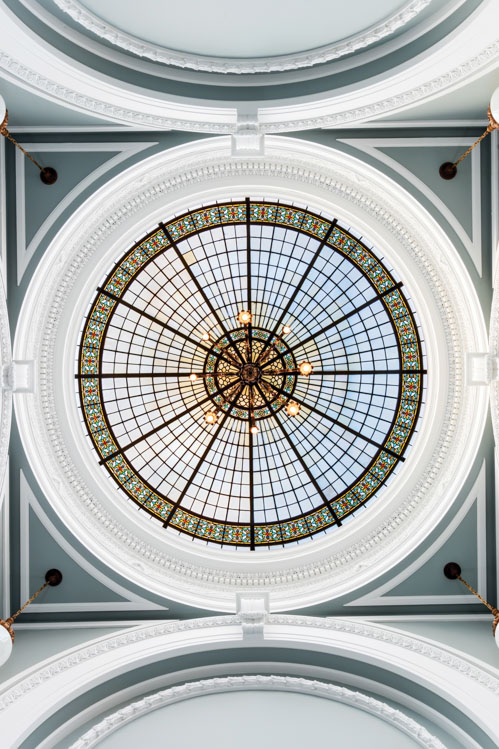 |
Sioux Falls
1938
415 S. Main Ave., was begun in 1924 by George Pettigrew, grand secretary of the State Masonic organization. The library lists between 25,000 and 30,000 volumes including a chronological record of the proceedings of the Masonic Lodges in all the States of the Union. At the west end is a small museum, one large show case being filled with trophies from various masonic group meetings. One feature is a stained glass window, which was in the stair room at the Columbia Exposition in Chicago. A reproduction of King Solomon’s temple, delicately carved, with decorative beads worked out in Mosaic pattern is also in the library museum.
2018
The books, artifacts and stained glass window were removed when the Masons sold the building to Architecture Incorporated in the 1990s and renovations began. “The dome had accumulated coal dust from the boiler such that it looked more like frosted glass than stained glass,” says Dick Dempster of Architeture Incorporated. “We had no idea how beautiful the stained glass was until it was re-installed.” Visitors are always welcome to view the dome and other unique features.
THE COUGHLIN CAMPANILE
Brookings
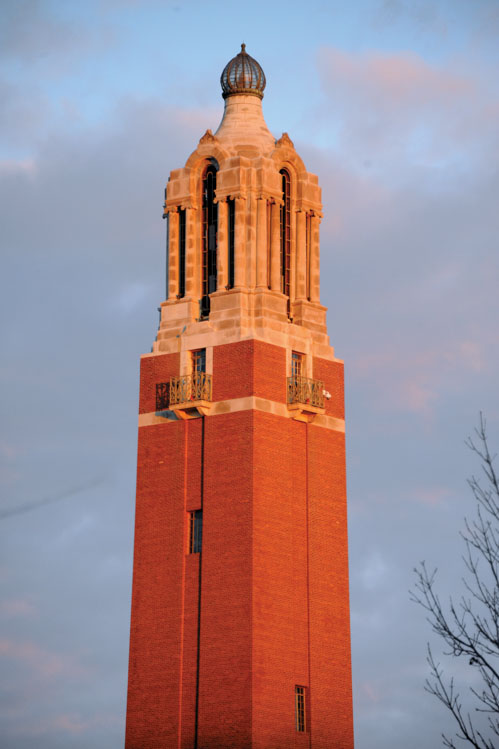 |
1938
The Coughlin Campanile and Chimes, rising 165 feet and dwarfing all other buildings in the city, was given to the college by Charles L. Coughlin, an electrical engineering graduate, on the occasion of the 20th anniversary of his graduation. He was a South Dakota farm boy from Carthage, and is now a prominent Milwaukee manufacturer.
The total cost of the tower was approximately $75,000. It is built of white Indiana limestone, red brick and concrete, to harmonize with the beautiful Lincoln Memorial Library. There are 180 steps leading to the balcony, the highest point that can be reached by visitors. The balcony floor is 112 feet above the ground.
A glass-covered hatchway in the ceiling of the balcony room permits a view of six of the eighteen tubular chimes, and also of Old Faithful, a bell cast for State College in 1885, and one of the 8,000,000 candlepower beacon lights. There are 18 tubular bells in the belfry, which are struck with electrically operated hammers fitted with rawhide tips to give a mellow tone.
2018
The Campanile remains in tip-top shape and climbers are still welcome. While the door is locked, you can borrow a key from the alumni office across the street or University Police, one block north. Interestingly, the Campanile is the only point of interest noted in the guidebook for Brookings. Today, you’ll also want to visit McCrory Gardens, the South Dakota Art Museum, the State Agricultural Heritage Museum and the city’s bustling downtown, where you’ll find Nick’s Hamburgers, a quaint little eatery that was already frying burgers as the Campanile’s 320,000 bricks were being laid in 1929.
DEUELING COURTHOUSES
Gary
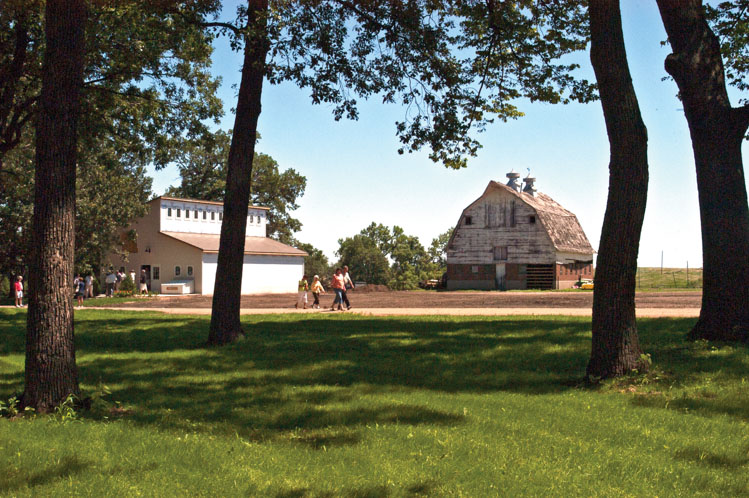 |
1938
Gary, where the State School for the Blind is located, and Clear Lake were the principals in the contest [for County Seat]. Clear Lake was situated in the approximate center of the county; but Gary was the older town, and in addition, had been presented with a new courthouse by the Chicago & North Western R.R. When the battle ended, Clear Lake had won, and Gary’s new courthouse slowly began to fall into a state of desuetude. Today it is used as a chicken house at the State School for the Blind.
2018
We were intrigued by the idea of a courthouse turned chicken coop, so we pulled into the former School for the Blind campus. The school was housed in several beautiful buildings for 60 years, and in 1961 it moved to Aberdeen. The campus was vacated completely in the 1980s. Today it’s home to the Buffalo Ridge Resort and Business Center, featuring a hotel, restaurant and bar. We searched for a chicken coop that had a stately, courthouse look but we didn’t have luck. So we explored and asked questions. We learned that the chicken coop/courthouse was torn down. Some of its wood was used to build the school’s barn, which is still standing. The school administration building is now in the courthouse’s old location. It holds event space and the Rock Room Bar and Grill, featuring Buffalo Ridge’s craft brew, “Talking Water.”
OLD STATE CAPITOL
Watertown
1938
The Old State Capitol, Kampeska Road and Lakeshore Drive, was never used as a government building and now it houses a nightclub. In 1889, when South Dakota was admitted to the Union, Watertown business men built the Capitol as an inducement to locate the seat of government there. The optimistic men raised $60,000 for the building and campaign expenses, and then, to their discomfiture, Pierre was selected.
2018
Watertown campaigned to be the state capital but we found no historical record of a capitol building, and local historians are skeptical. Christy Lickei, director of the Codington County Heritage Museum, combed her records. “We think that the only building [of that era] that would have been a nightclub on the shore of Lake Kampeska would have been the Flamingo,” she says. “It was built after 1900 as an officer’s club building at the State National Guard encampment.” Lickei suggests that someone in Watertown made up the story to entertain the visiting writer in 1938. However, the 5,000-acre Lake Kampeska remains a recreational paradise for boaters, swimmers and anglers.
WYLIE PARK
Aberdeen
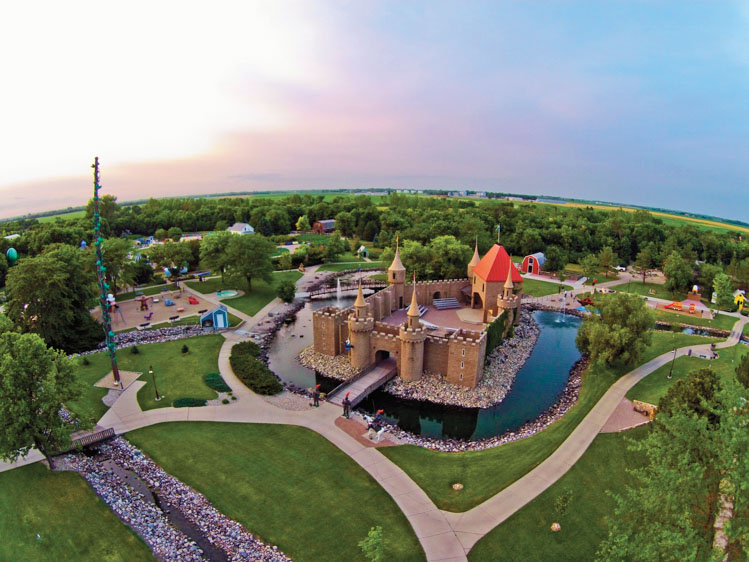 |
1938
Wylie Park has an artificial lake and bathing beach. The lake is called Minne-eho or Water Behold. The park consists of 25 acres, part of which is a zoo with buffalo, deer, elk, bears, coyotes, foxes, monkeys, eagles, pheasants and waterfowl.
2018
Deer, buffalo and other hoofed wildlife can still be seen at Wylie, but the park is now best known as home to Storybook Land, a fanciful world of life-size fairytale creatures. Most popular are the Wizard of Oz characters because Frank Baum, who created the Yellow Brick Road story, lived in Aberdeen and patterned them after local people.
MAIN STREET
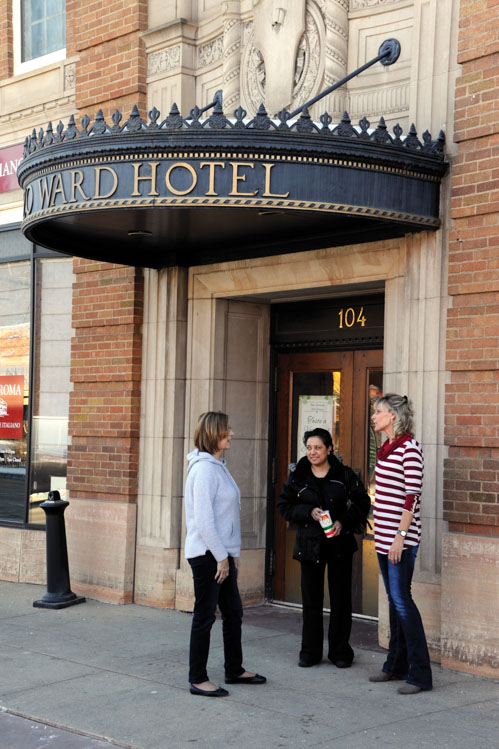 |
Aberdeen
1938
The site of the drug store in Main Traveled Roads by Hamlin Garland is at the corner of Main St. and First Ave. S.E., across from the Alonzo Ward Hotel. In this frame building the drug store clerk who “chased a crony with a squirt pump” worked for John Firey, Aberdeen pioneer.
2018
The building across from the Ward Hotel is now attorney Jodi Brown’s law office. The Ward, a landmark in Aberdeen’s downtown since it was built in 1928, is still abuzz with activity from shops, restaurants and a lounge. Garland, a popular novelist, homesteaded in Brown County along with his parents in the 1880s. A section of Brown County Highway 11 was dubbed Hamlin Garland Highway in 1936 and it’s still so-marked today.
FATHER ROBERT HAIRE MONUMENT
Aberdeen
1938
The Father Robert Haire Monument on the campus [of Northern State] was erected in honor of the pioneer priest of South Dakota. Father Haire came to Dakota Territory in 1880 and built a sod church by his own efforts near Columbia. He was active in the move to place the initiative and referendum law on the statute books of the State.
2018
The priest’s monument still stands in the original college green. His bearded likeness seems somber — perhaps because lawmakers this year made a number of efforts to make initiatives and referendums more difficult to enact.
HIGHWAY ARCH
Ipswich
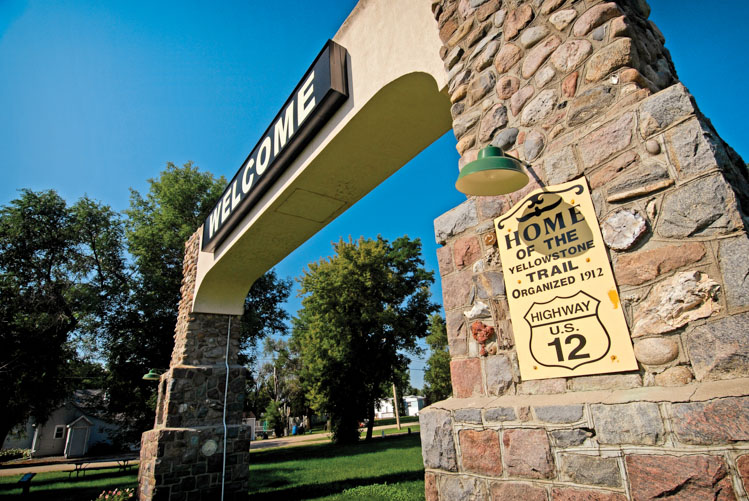 |
1938
The promotion of the Yellowstone Trail (US 12) from “Plymouth Rock to Puget Sound” was begun at Ipswich by Joseph W. Parmley. A World War Memorial Arch spans the highway, bearing the name of the Yellowstone Trail and its founder.
2018
State officials demanded that the arch be removed when Highway 12 was expanded in 1973, but they also found monies to move the stone memorial to a nearby park where it stands today.
PETRIFIED TREE
Near Bison
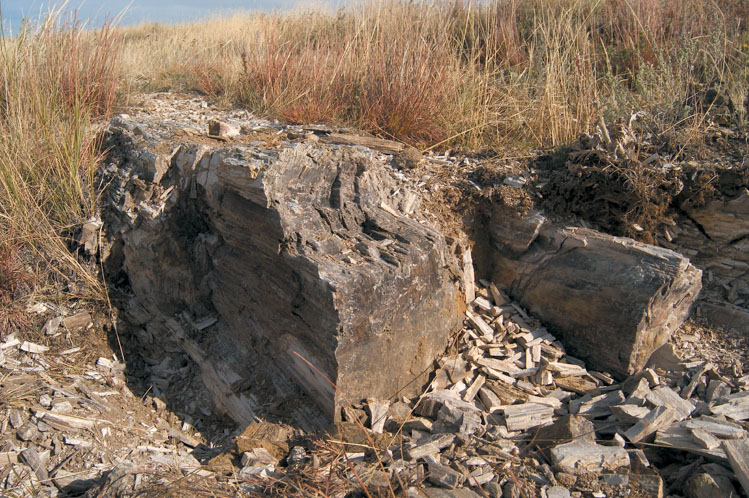 |
1938
This town is the seat of Perkins County. [Outside] town is a sign, “Petrified Tree.” Left here 3 m. to a Petrified Tree, claimed to be the largest in the world. Competent observers have declared that there is no record of a larger mass of petrified wood all in one place. The tree, buried in a hill, was discovered only recently. Seventy-five feet of it have been uncovered and there is still more in the hill. At the base the diameter is 2 ft. Scientists say that this gigantic tree is a member of the Sequoia family.
2018
We found the tree, lying just as the 1938 writer described. Unfortunately, it is in a remote pasture known as the Haas Hills, far from any public road, so readers will not likely be able to get there. But you’ll see plenty of petrified wood in Perkins County. Lemmon’s Petrified Park is the best stop.
JUMP-OFF
Harding County
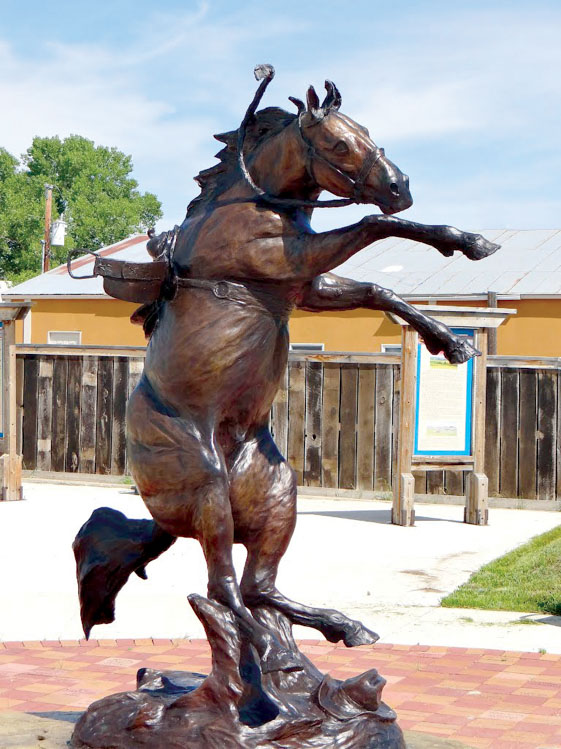 |
1938
The Jump-Off is really a fault in earth’s surface extending N. and S. for many miles, the country is much like the Badlands on a smaller scale. … It was in the heart of the Jump-Off that Tipperary, South Dakota’s most famous bucking horse, lived his entire life on the ranch of his owner, Charlie Wilson. He retired an undefeated champion and lived to be more than 20 years old. In spite of good care, he was caught in a severe winter storm and his remains were not found for many weeks.
2018
Tipperary is still legendary in Harding County, so much so that artist Tony Chytka sculpted a life-size tribute to the bucking bronc in 2009. It stands in Centennial Park in Buffalo.
FISH HATCHERY
Spearfish
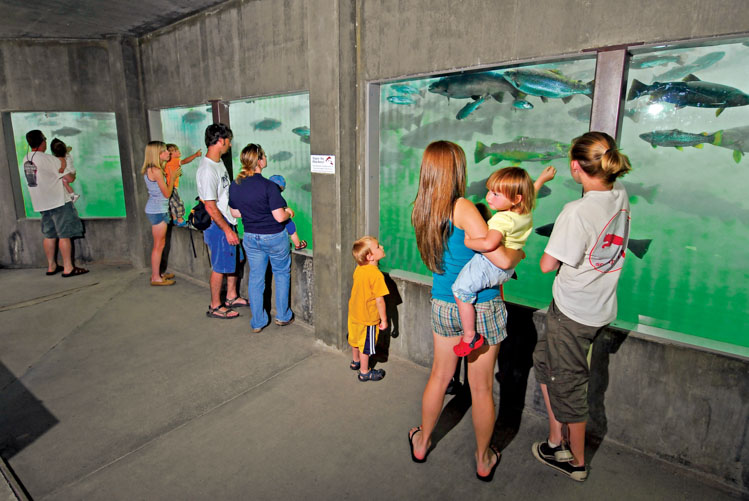 |
1938
Just S. of the city park is the U.S. Fish Hatchery established in 1899 for the purpose of hatching fish with which to stock the streams and lakes of the Black Hills region. This hatchery conducts extensive feeding experiments … during the present year the station has received 10,000 lbs. of ground seal meat from Alaska.
2018
Trout still swim in pools at the hatchery, but today they are on exhibit. The hatchery closed in the 1980s but it remains open (free admission) as a site that preserves the heritage of the U.S. Fish & Wildlife Service in the Black Hills. It is a delightful stop for children and conservationists.
DAYS OF ’76
Deadwood
1938
Every year the “Days of ’76” celebration draws aside the curtain of the years that would dim the memory of hard-bitten men drawn by the lure of gold from the far corners of the world to the wilderness that was Deadwood … the festivities invoke the ghosts of those whose glasses clinked in the old Green Front Saloon to the strain of a prospector’s fiddle.
2018
Fifty years after the 1938 guidebook was published, South Dakota voters approved gaming in the old mining town, and now it is an entertainment mecca in the mountains. Citizens still celebrate their rollicking history with the “Days of ’76” celebration, set for July 24-28 this summer.
HALLEY PARK
Rapid City
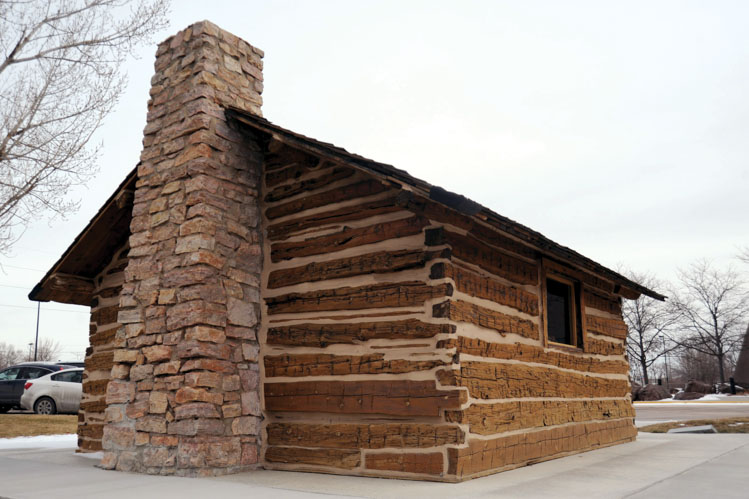 |
1938
Halley Park (West Blvd. at Main & St. Joe Sts.) consists of a triangle of about three acres. American elm trees surround the entire park, with spruce forming the background of a rose arbor. A central lily pond is surrounded by the perennial garden with its 25 different types of long-lived plants. At the extreme west end is the oldest cabin built in Rapid City, a squat, cozy-looking structure, built in 1877 near its present site.
2018
The little park has survived downtown Rapid City’s considerable progress. Roses still bloom there in summer. The elms and lily pond are gone. The log cabin, just 15-by-15, was moved to the grounds of the nearby Journey Museum six years ago. Known as the Pap Madison Cabin, it is now considered the oldest structure in the city.
SCHOOL OF MINES MUSEUM
Rapid City
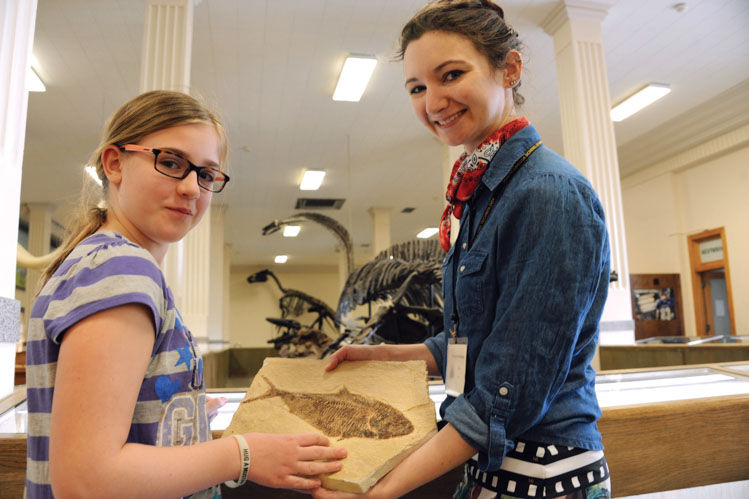 |
1938
Several years ago some workmen while blasting rocks in a quarry near Rapid City uncovered in a line of cleavage in the rock the perfect imprint of a fish 10 inches long and this is on display in the museum.
2018
The Museum of Geology’s collection of paleontology and mineralogy is bigger than ever, but sure enough — near the visitors’ log by the front door — we found the imprint of the fish from the Cenozoic Era, dwarfed by fossilized dinosaurs, marine reptiles and mammals found since 1938 in western South Dakota.
DINOSAUR PARK
Rapid City
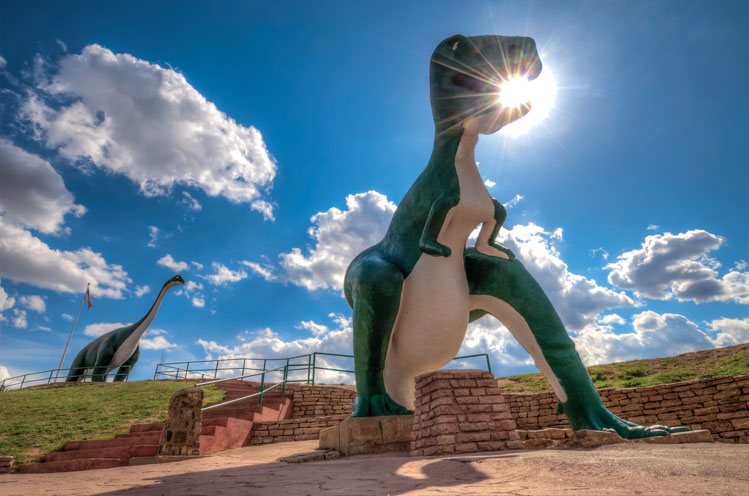 |
1938
Dinosaur Park has five life-sized prehistoric reptiles modeled in cement on the hillside. At the right are the lumbering Triceratops and Tyrannosaurus Rex waging combat. The Brontosaurus, center, was the largest of pre-historic reptiles, and this reproduction is larger than any previous. However, there is no exaggeration since it is reproduced exactly to the measurements of fossils in the American Museum of Natural History. The amphibian lived in the water, weighed about 15 tons, had a 2-ounce brain and a smooth skin.
2018
Every Rapid City toddler knows that creatures still lord over the town’s skyline in Dinosaur Park. They were constructed in 1936 by the same WPA project that funded the guidebook. The concrete beasts were gray until the 1950s, when they were painted green. Two creatures have been added since the original five were designed. Though the T-Rex has lost some teeth and claws, all seven are in good shape and beloved by the children of South Dakota.
FLICK’S CABIN
Custer
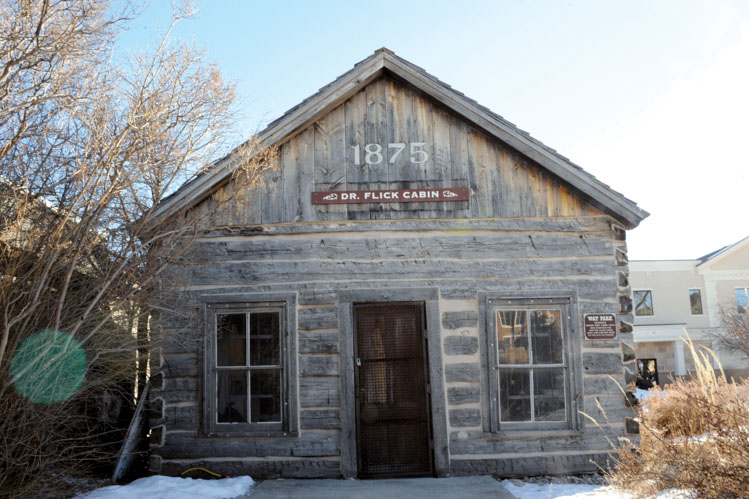 |
1938
The Log Cabin Museum, on Main St., opposite the courthouse, is the oldest standing building in the Black Hills. It was built by General Crook’s soldiers under Captain Pallock of the Fifth Cavalry in 1875.
2018
The cabin and the courthouse (now a museum) are still on Main Street. However, the 1938 writers neglected to mention Dr. Flick, who built the cabin and then left the Black Hills on orders of the federal government. The good doctor returned to find his cabin occupied by the famous cavalry scout Jack Crawford. A legal battle ensued. Flick won. Today his name is posted on the front door.
SANDSTONE CASTLES
Hot Springs
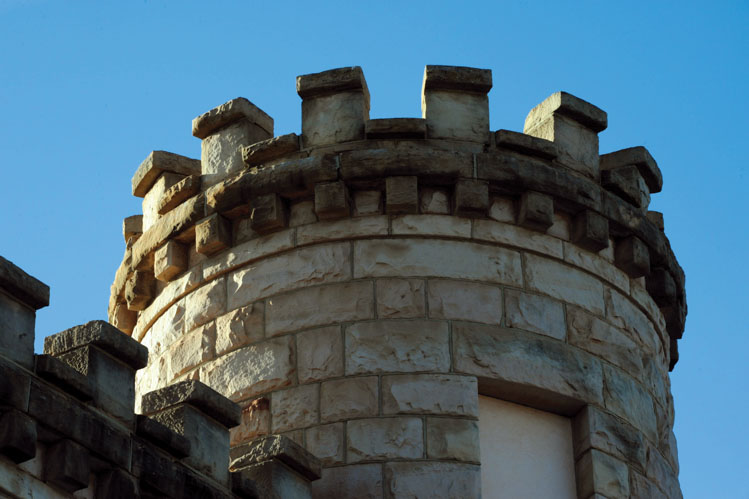 |
1938
Quarrying of stone is one of the town’s major industries. Begun before the year 1900, 5 miles SE of town, the quarry has been operated for many years for the purpose of obtaining pink sandstone, which is used in local and state-wide construction work.
2018
Twenty-seven quarries mined the sandstone in Fall River County. All are now closed, but buildings constructed of the stone — relatively new when the 1938 guidebook was published — are now historic treasures. The National Trust for Historic Preservation has named Hot Springs one of America’s Distinctive Destinations.
Editor’s Note: This story is revised from the May/June 2018 issue of South Dakota Magazine. To order a copy or to subscribe, call (800) 456-5117.




Comments